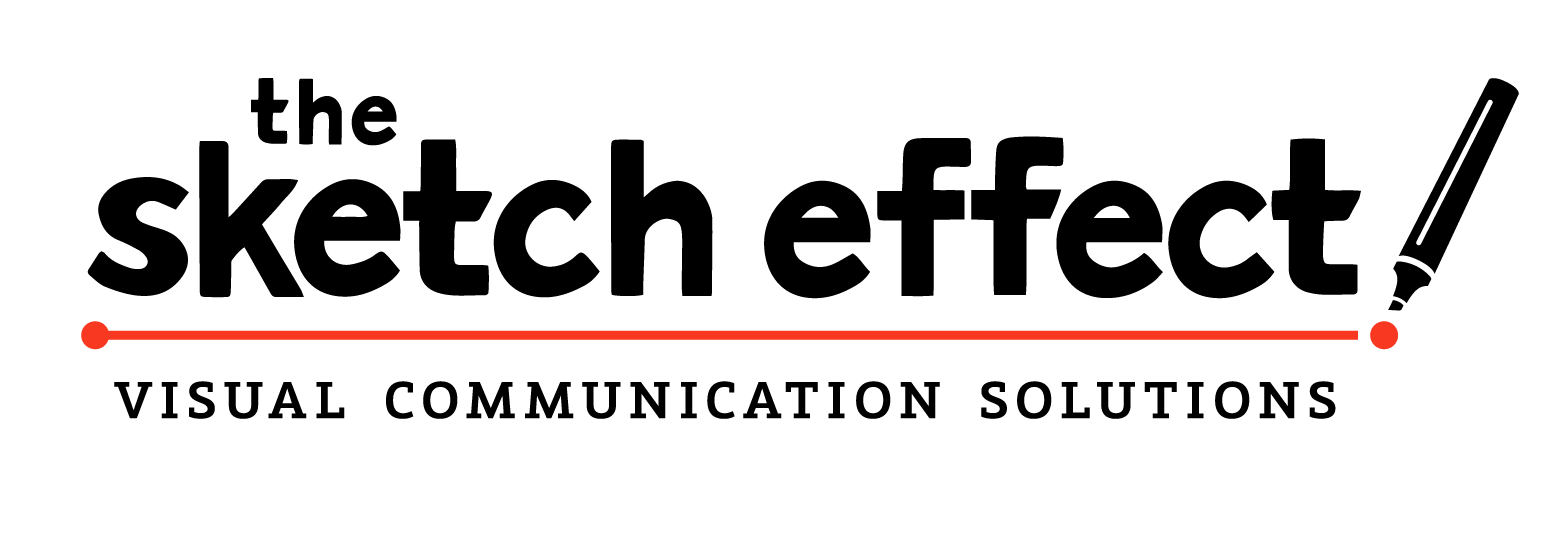Of all the skills that could change the world—I mean literally change the world—I truly believe that one skill rises to the top:
Listening.
Listening improves our relationships. It increases our effectiveness in the workplace. It leads to cooperation. It builds people up, affirms others’ worth, and builds trust. It relieves stress and reduces tensions. It saves time and prevents misunderstandings. It cultivates real influence.
Listening is incredibly powerful, and if we all became better at it, I believe our lives, our workplaces, our communities, and yes, our world, would change for the better.
At the Sketch Effect, we are professional listeners.
We’ve professionally listened to, and sketched, the content from some of the world’s biggest brands, largest companies, and most inspiring leaders. I’m talking about folks like Steve Wozniac, Sheryl Sandberg, Ruby Bridges, Brene Brown, Andy Stanley, Malala Yousafzai, and more.
Sure, the artwork gets the attention. After all, “sketch” is in our name and fun, colorful, eye-catching visuals are what we create. However, good artistry is secondary to the listening…the true superhuman ability underpinning effective visual communication.
We’ve learned a thing or two about listening.
And the truth is, this is bigger than us. Much bigger. The skill of active listening is one of the most fundamentally important of all human skills…and, sadly, undervalued of all human skills.
That said, I’d like to offer four simple tips to becoming a better listener. These come straight from our own internal coaching curriculum used to train new Sketch Effect team members.
None of these ideas are rocket science, although for some reason we struggle so much putting them into practice.
Ready? Listen up!
1. BLOCK distractions
We are always getting distracted by things: noises, activity around us, and even the very thoughts in our heads. To be a good listener, you must make a conscious, intentional choice to block these distractions and focus on listening.
At The Sketch Effect, we sketch in all kinds of environments. Doors opening and closing, people having side conversations, weird echoes, the staff clinking silverware and refilling drinks – any kind of distraction you can think of we have encountered. Being able to block out these distractions is central to listening well.
Choose to focus. Tune out distractions out so you can tune in to the speaker.
2. Pause your BIAS
Our bias, our agenda, and our opinions are a huge hindrance to good listening. If you want to be a great listener, you have to leave your ego at the door. You have to muster up sincere curiosity, engage yourself in what you’re hearing, and summon empathy.
If you are listening, your job is to do that: listen. It’s about them, not you…their ideas, not your agenda.
Our team of Live Artists sketch for all different types of clients with all different types of opinions. We encounter ideas we love, ideas we hate…people we resonate with, others we don’t. In order for our team to be successful, pausing our own biases is critical to capturing this content effectively.
Just as I’ve coached our team, you don’t have to agree with everything you hear, but for a brief moment, put your agenda on hold.
3. Listen with your BODY
A huge component of listening is what we do with our physical bodies. Assuming a correct posture will enhance the listening experience.
It helps you stay engaged and also communicates your willingness to listen to the one doing the speaking.
At the Sketch Effect, we work on our feet…we are literally on our toes. We physically lean into the canvas. We are either looking at the speaker, or at what we’re sketching.
In fact, the tactile experience of putting pen to paper – whether to take notes or to doodle – literally helps you focus better.
Engaging your body in this way opens up channels of both kinesthetic and visual learning, and it enhances the entire listening experience.
So lean in, orient your body towards the speaker, engage with your eyes, nod your head. Avoid crossing your arms, slouching, or glancing around the room.
4. Listen with your BRAIN
The ultimate key to active listening is synthesis.
Listening doesn’t stop at the ears (that is called “hearing”). Being a great listener means you not only hear what is being said, but you actively process the information in your brain, filtering down to the core idea, the bigger theme, or the unspoken message.
A good way to do this is to repeat back to the speaker a brief summary of what you’ve heard.
For us, our clients don’t hire us to scribe what they say word for word. We’re hired to synthesize. In fact, we are required to literally show the synthesis in the form of colorful illustrations.
To listen better, and to show others that you are listening, synthesize what you hear and share it back.
Although there are many more listening tips out there, and plenty of books to read on the subject, beginning with these 4 will give your listening skills a huge leg up.
In world with lots of talkers, we could all use a few more good listeners. It could change your life and the world.
So have fun and listen up!











